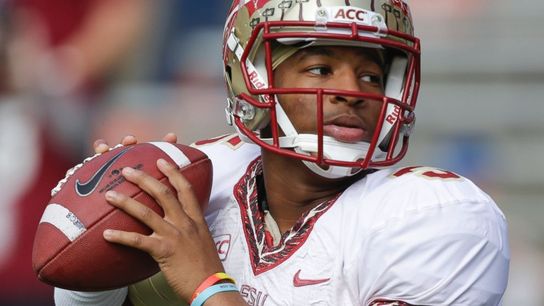It started with North Carolina basketball player James Michael McAdoo, and then spread to the football programs at Texas A&M, Wisconsin and now Florida State. And, if you want to be in the market for top talent on the recruiting trail, it could soon come to a program near you.
The Seminoles have become the latest in a growing trend of schools to purchase loss of value insurance for star players, this time for reigning Heisman Trophy winner Jameis Winston. Whereas Texas A&M offensive lineman Cedric Ogbuehi's policy was a straight loss-of-value insurance, Winston's policy is split between loss-of-value, covering him in case of a slip down the draft board, and permanent disability policy, should he lose the ability to play football altogether. Wisconsin did the same with prized running back Melvin Gordon, according to the Wisconsin State Journal.
ESPN's Darren Rovell has placed the value of the policy at $10 million.
According to Tomahawk Nation, Florida State will pay a premium between $55,000 and $60,000 to secure the policy.
The money, like with Texas A&M and others like it across the country, comes from Florida State's Student Assistance Fund. The NCAA describes the Student Assistance Fund as such: "shall be used to assist student-athletes in meeting financial needs that arise in conjunction with participation in intercollegiate athletics, enrollment in an academic curriculum or that recognize academic achievement."
Typically, this fund has been used to cover unexpected costs student-athletes may incur, such as a trip home for a funeral, or to purchase business attire to attend media days.
The Student Assistance Fund is a limited pool, and responsibility lies with the conferences to administer the funds and interpret how they may be dispersed. For instance, Ogbuehi's nearly $60,000 premium accounts for nearly 20 percent of the $350,000 SEC schools received last year.
Florida State is just the latest of what is sure to be a growing list of schools offering this perk. What began as a tool to recruit players already enrolled to remain in school could quickly become a carrot offered to high school players during the original recruiting process. As with anything else in recruiting, once one school does it, many others will feel they'll need to hop aboard or get left behind. With such a limited fund - that must be shared with the entire athletics department, mind you - it will be up to coaches to manage it.
